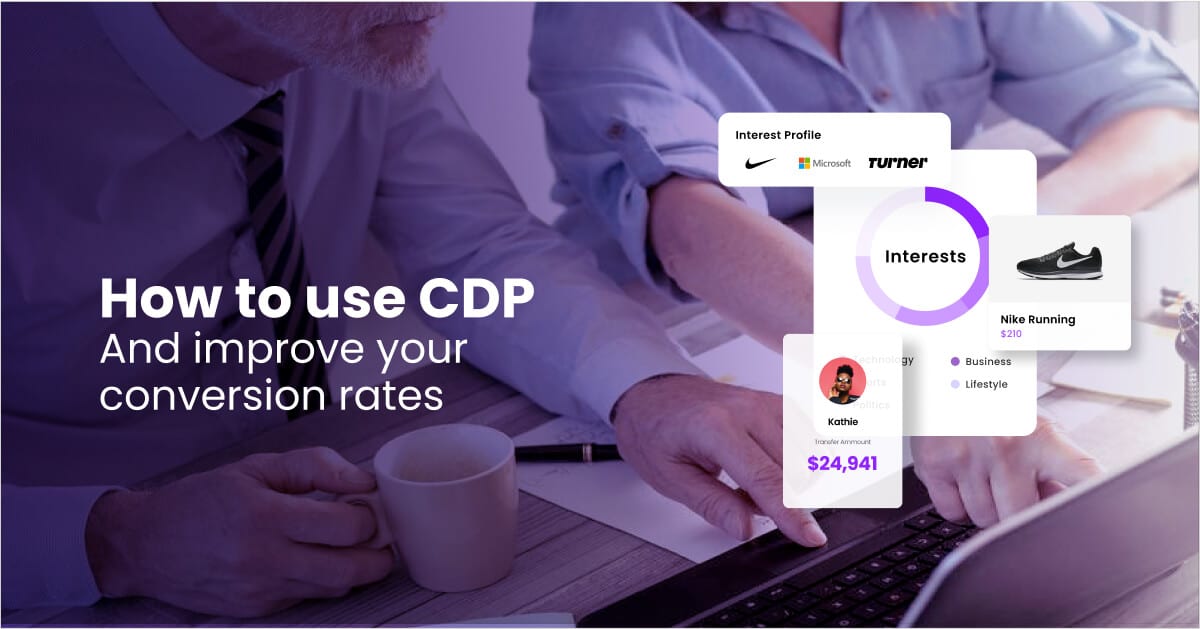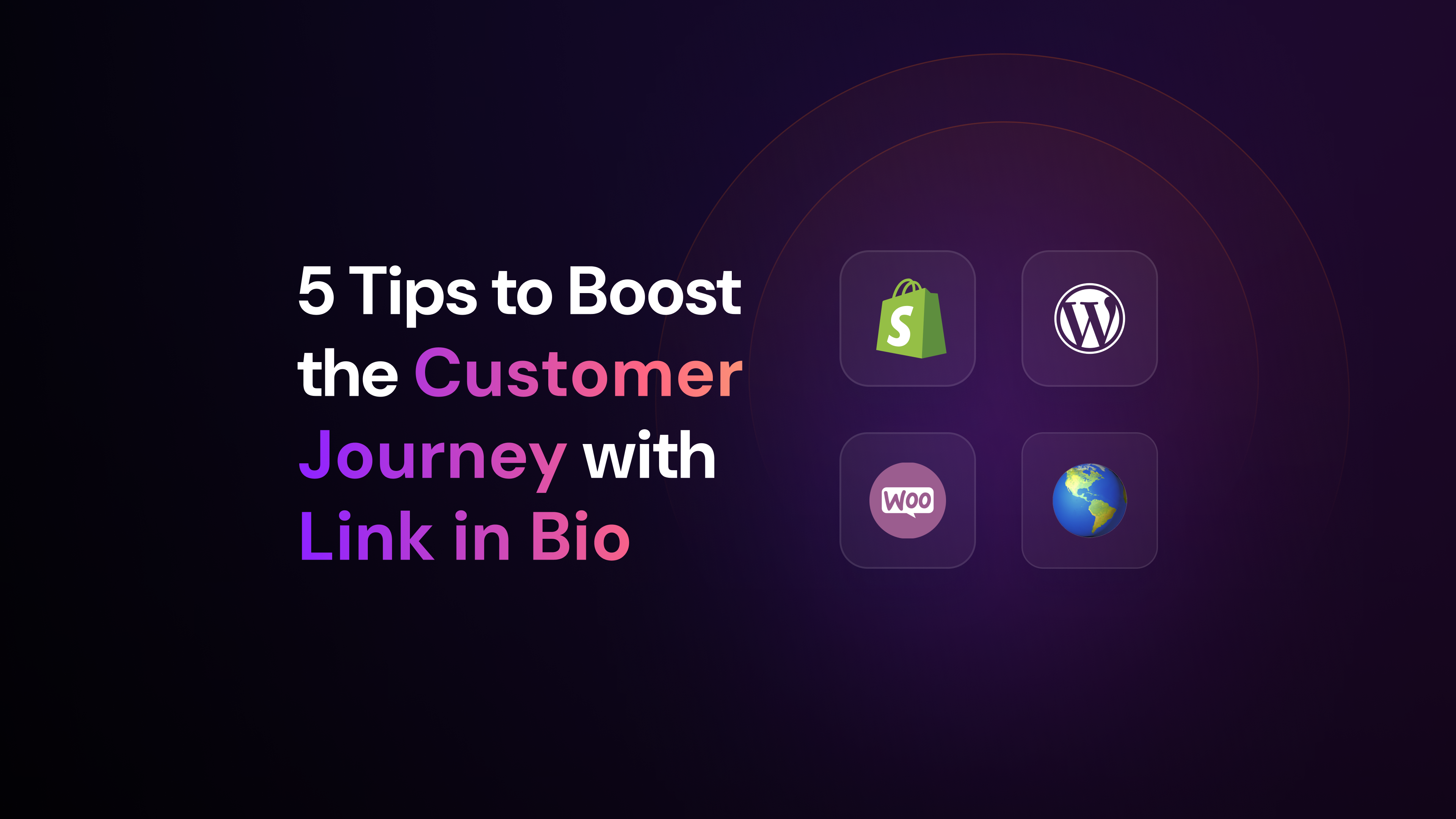

Customer Data Platforms can fuel your marketing efforts, help you improve customer experience, and maximize ROI. This post will teach you how to embrace CDPs on daily marketing activities to potentialize results.
Marketing leaders’ job has become more challenging year after year with the rise of new content channels, connected devices, and sales formats. In a competitive scenario, acquiring and retaining requires more than just a good strategy. We live in the age of tailor-made communication, where there is no room for basic and generic marketing anymore.
No wonder companies from all segments have searched for ways to make their marketing approach more personal and cost-effective at the same time, which requires the right tools and best practices for data management.
A report from the CMO Council shows that marketers worldwide see the execution of a data-driven strategy as their primary challenge to have a unified view of customer experience (CX) across different touchpoints, according to 38% of marketers consulted for the study.
According to 30% of respondents, another challenge is to abandon customer data silos, which make data inaccessible across the organization. Even though marketers can count on CRM and DMP platforms to understand some of the customers’ engagement and pain points, the problems above can only be truly solved through robust data management platforms.
In that sense, digitally mature marketers have specifically reached out to Customer Data Platforms (CDPs) in order to understand customers better and offer them a better customer experience.
Ultimately, a CDP can boost brands’ ROI and help them maximize conversion rates. This post will explore the concept of CDP, how it differs from other data platforms, and how marketers can use them to improve their results.
#Subscribe and stay on top of news on our blog
What is CDP?
A Customer Data Platform (CDP) is software that centralizes customer data from different data systems and customer-facing platforms. It collects quantitative and qualitative information from diverse touchpoints with customers, offering a friendly interface that allows companies to access customer data from different departments easily.
Customer Data Platforms combine customers’ demographic data, buying history, hobbies, transactional data, social media preferences, interactions with call centers, navigation data, and more.
They work mostly with first-party data, crossing information from Customer Relationship Management (CRM) systems, Data Management Platforms (DMPs), and customers’ direct interactions with your brand through support channels, payment methods, social media, and different devices.
The idea is to combine Personally Identifiable Information (PII) and build a unified view of individual customers – also called Unified Customer Profiles. Since the data match is consistent across different platforms, data is even more reliable than other platforms.
A few examples of data collected by CDPs:
- Purchases
- Renewal dates
- Customer and product value
- Abandoned baskets
- Stage in the conversion funnel
- Products and categories searched and browsed
- Store and website visits
- Content and channel preferences
- Social media interactions
- Customer support interactions
- Email opening rates
- Lifestyle preferences
- Contact information
These are just a few examples. The possibilities are endless! In reality, your company can choose to plug in any data system to the CDP. All data can then be stitched to the unique customer profile, allowing marketing teams to work on segmentation and personalization.
Typically, CDPs are used with five purposes in mind:
- Improving customer identity resolution
- Data cleansing and enrichment
- Data Centralization and integration
- Audience data analytics
- Marketing segmentation and optimization

CDP vs. CRM vs. DMP: beware of the difference
The marketing industry has long relied on acronyms to refer to metrics and tools. The data management realm is specifically pervaded by similar acronyms that comprehend entirely different things, such as CDP, DMP, and CRM.
Most marketers will agree that it is essential to manage data through one of these: Data Management Platforms (DMP), Customer Data Platforms (CDP), and Customer Relationship Management (CRM). However, not all of them might understand how each of them works.
All three platforms share a list of common assets: they aim to establish a Single Customer View (SCV), use data for audience activation, and offer reporting, analysis, and optimization tools. Such platforms will often work side-by-side, but CDPs, DMPs, and CRM show many differences despite their similarities.
We have already explained how CDPs work, now let’s explore how DMPs and CRM systems compare.
Data Management Platforms
The DMP is mainly used to drive advertising campaigns, relying almost exclusively on anonymous data from cookies, devices, and IP addresses. It captures generic data such as when users visited your website and how long they spent on the page.
Then, such navigation information is used to target ads according to customer behavior to reach customers who match the brand’s target profiles – a process called probabilistic matching. A DMP can monitor campaign strategies, identify conversion points and personalize campaigns according to them.
Main differences with CDP
- CDPs work with both anonymous and known individuals, while DMPs work almost exclusively with anonymous entities and unknown customers
- In CDPs, database updates happen in real-time, while DPMs only allow scheduled database updates
- CDPs are based on historical integrated customer records, which means you can store customer data for however long. DMPs, however, store data for shorter periods, usually up to 90 days (a cookie’s lifespan) to target ads and build lookalike audiences
- DMPs are used only for managing digital advertising, while CDPs can be used across an entire organization, including for sales and customer success
Customer Relationship Management
CRM systems are typically used by sales teams, storing personal information from known customers – such as contacts, demographics, transaction data, notes about customers made by sales, CRM, and customer success teams.
Softwares alike are used to track leads, understand the sales pipeline, and for driving customer engagement. CRMs don’t store anonymous user behavior.
Mains differences with CDPs
- CRMs aren’t built to ingest large volumes of data from different sources, like CDPs
- CRMs only analyze personal data from known customers, such as name, age, and contacts, but not navigation behavior – something tracked by CDPs
- CRMs do not connect customers’ actions through different channels and devices, and so is not able to follow the customer journey like a CDP
Using CDPs to improve marketing ROI
Successful marketing campaigns don’t embrace just a few channels, but a complex constellation of touchpoints with your audience. Acting over this constellation, however, can sometimes be challenging. A survey from the Harvard Business Review shows that only 3% of marketers believe they are able to act on all of the customer data they collect. Another 21% say they can act on very little of it.
As we discussed earlier, CDPs can play a significant role in connecting customers’ fragmented journey. But beyond that, they can help you make smarter investment decisions, improve ROI, conversion rates, and Customer Acquisition Costs (CAC).
Also, CDPs can automate and eliminate repetitive, time-consuming tasks from marketing professionals’ routines, making daily marketing activities more agile.
A few ways a CDP can improve business results:
Accurate personalization
In the age of recommendation algorithms, customers expect personalized experiences everywhere. Marketers should avoid at all costs making wrongful recommendations or serve ads that are not relevant within the user’s journey.
Because CDPs break data silos and integrate marketing efforts across different channels, they help brands to deliver the right messages, at the right time and in the right channels for customers. For instance, you could exclude users that recently bought your products or those who are not likely to engage with your ad campaigns from your targeting strategy, focusing on users who are likely to engage.
Better budget allocation equals better leads
CDPs allow brands to acknowledge what products customers show interest in, their purchase intent, and how likely they are to churn. They can also find out their favorite interaction channels and stage in the customer journey. From there, it gets easier to allocate ad dollars and improve content strategies on every channel.
As a result, CDPs help attract more qualified leads, optimize marketing budgets, reduce customers’ acquisition costs (CAC), and improve conversion rates.
More qualified data
Marketing leaders are shifting their attention from second and third-party data to first-party data. As privacy and compliance regulations become more consolidated, organizations increasingly seek to work with their own, integrated data – something Customer Data Platforms can help them with.
Driving data-driven sales
Customer Data Platforms can help sales teams upsell or cross-sell products based on customers’ recent purchases or search intent. By having access to enriched, accurate data, salespeople can better design retargeting and churn prevention campaigns through email, mobile, and other channels.
More autonomy and agility to marketing professionals
Depending on other departments for reports and insights can be time-consuming and unproductive for marketing teams, since not everyone is on the same page about marketing needs. CDPs are useful to many areas within a company, but every team can shape their use according to specific goals while having access to all kinds of company data.
According to CMO Council, 67% of marketers believe speed is one of the primary benefits of data-driven marketing, resulting in quickly executing their campaigns. Through CDPs, teams can scale marketing efforts and get new processes started faster.
Benefits from CDPs don’t stop there. In this post, you can check 20 ways CDPs can be used in marketing.

Integrations and key assets of CDPs
In a fragmented media and advertising landscape, marketers want tools to give them more control over events in their channels. CDPs allow companies to integrate different systems and deploy data with customers’ profiles to many marketing and customer relationship platforms.
Most Customer Data Platforms typically offer connector marketplaces where marketers can set up integrations in just a few minutes. However, the depth and amount of possible integrations can vary according to the CDP you choose.
Areas of integration offered by CDPs usually include:
- Advertising: Integrations to DSPs, Facebook Ads Manager, Google Marketing Platform, and more
- Analytics and AB Testing platforms: Google Analytics, Adobe Analytics, Optimizely, MixPannel, etc
- Email and marketing automation tools: MailChimp, Hubspot, Sendgrid, Salesforce Marketing Cloud, SMS tools, and others
When connected to other systems, CDPs can deploy customers’ profiles to marketing tools (also called delivery platforms), enabling the planning and distribution of campaigns and personalized messages.
The amount of tools companies will connect to their CDPs will depend on the specifics of their business. Large businesses are likely to connect more tools than small companies, for instance.
Before adopting a CDP, be prepared
Yes, a Customer Data Platform can do wonders for your marketing strategy, but you need to feed it for it to work properly. CDPs won’t effectively integrate customer touch points if they can’t truly access data about the whole customer’s journey.
If you want a seamless, functioning CDP, it has to be fueled with multiple data records from clients – not just a few sources. A Customer Data Platform should gather historical data and freshly-collected data about their interactions with your brand.
That’s how it can create a satisfactory customer profile and identity resolution (when the system matches records from different data sources and connects them to single customers). But why do you need identity resolution?
A customer might interact with your brand through several channels and devices, but sometimes CDPs will interpret different data points as if belonging to other customers.
So, not having enough data or having insufficient data prevents you from having the perfect picture of single customers, resulting in wasted investments, bad customer experience (CX), and poor marketing results.
In a nutshell: the more data sources your CDP can gather, the better. If your company only provides a few data points, your unified customer view might not be so complete, resulting in gaps in customer experience and poor conversion and engagement results.
Want to learn more about CDPs?
As we have seen, Customer Data Platforms are complex, and so is the process of choosing the best one for your company.
If you want to dig deeper into the benefits of CDPs for marketing, we recommend downloading Arena’s “Customer Data Platform 2022” ebook. In this complete ebook, you will find more valuable information about how CDPs work and how they can be incorporated through every step of marketing.
If you want to learn the specifics about Arena’s CDP, feel free to reach out to one of our consultants.



